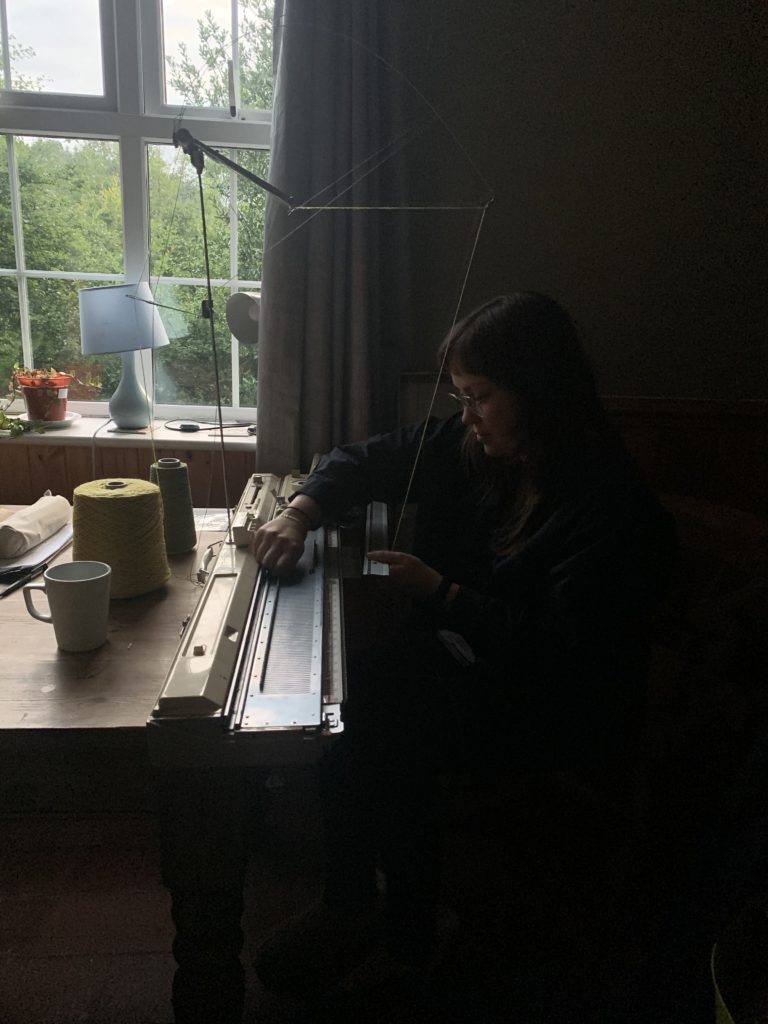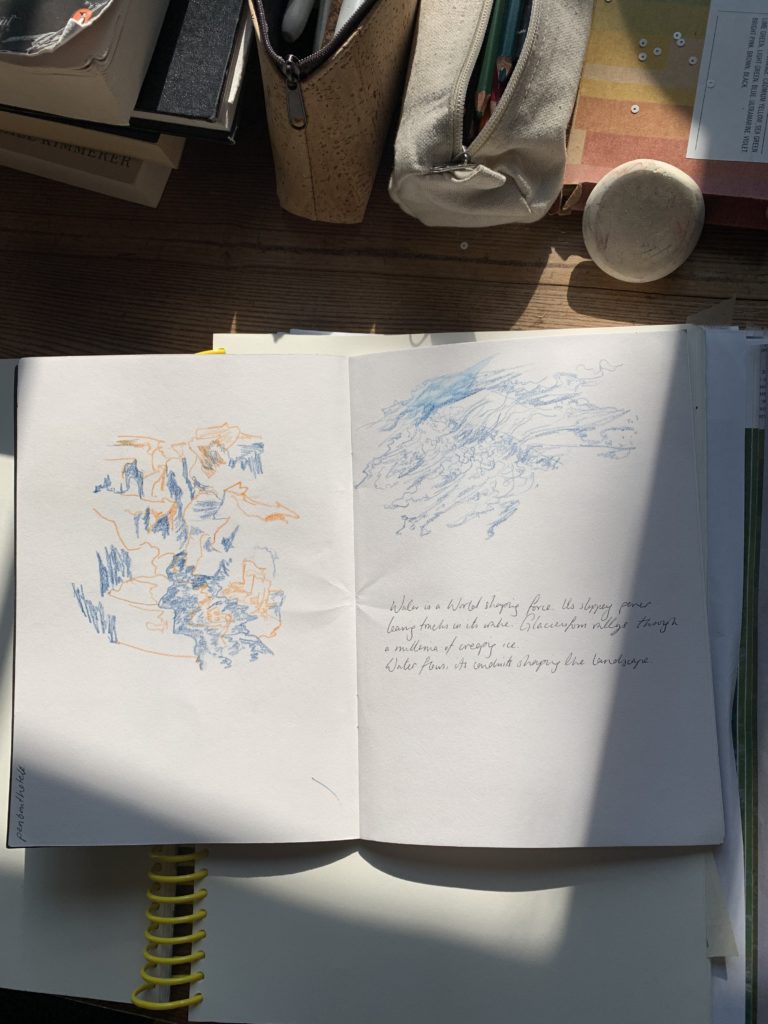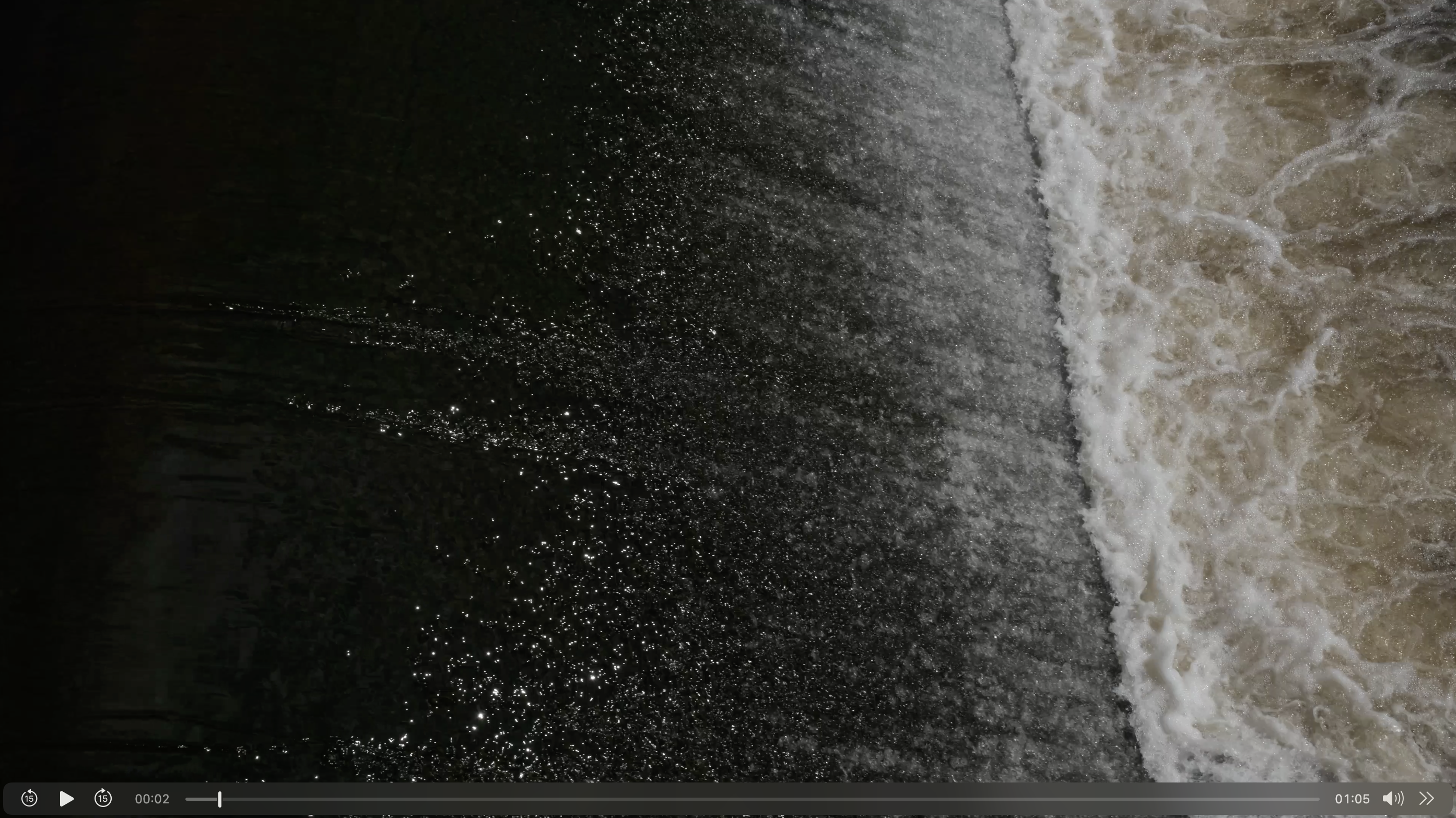About Alis
Alis is an artist, educator and PhD candidate based in Birmingham, interested in networks both digital and cultural, infrastructural and metaphorical.
Alis is interested in the metaphorical bridges that can be opened through language. We talk about the cultures present in soil, in the micro ecologies under our feet. We also talk about human cultures that are passed from person to person and shared through online networks. Alis uses these metaphors to fuel her practice in writing, filmmaking and image making.
More recently, she’s begun to explore craft techniques – knowledge that is often shared through networks of skilled makers from generation to generation, which has migrated to online global networks of expert knowledge now found on Facebook!
Alis has started working with machine knitting which shares a curious history in early computation. The punchcard technology from the Jacquard Loom inspired the first algorithm by Ada Lovelace.
For the last few years Alis has been cultivating a metaphor to help us understand and better use the internet.
The world wide web forms a topography; a mesh of interconnected virtual travel. Like Earth, its virtual sister has been depleted in the pursuit of resources. The internet giants work like agricultural industrialisers cropping our data for commercial profit. Increasingly commodified interactions online exist within strict parameters; whilst sites of vibrant self-sustaining, non-commercial virtual cultures are harder to pinpoint and therefore protect.


In short, she thinks that the internet is a landscape and that its soil is sick. In her current work, she is questioning whether we can adapt methods of working/tending to the land to address our use of its digital counterpart. The residency gave her an opportunity to be immersed in a real landscape in order to occupy a fictional one inside her head!
When applying for the residency, Alis stated that she wanted to work out what digital water might be inside this internet landscape, what purpose it might serve within an e-cology.
She walked by the streams that led into the valley, stomped on pockets of ground water as she walked up the hills and saw the low-lying fog moving into the valley, drawn by the shape of the landscape. Her first instinct is always to draw, it’s how she keys into a project or place. She took her sketchbook and pencils out into the landscape to draw the different water surfaces and the terrain waterways had formed over time. There is such force to the water at Elan that the channels are dramatic and powerful.
It is this that helped her draw conclusions about what water might be in the internet landscape. Water, she thought, is the stuff of life – the force that enables cellular exchange, feeds organic matter and brings with it verdant and abundant life. Water connects all living things, it makes up 60% of our bodies and it flows from and through us into the cyclical network that spans the globe.
Alis came to see that the water of our ‘interranet’ is data. Data is the digital force of exchange. Data flows from (and through) us, is transported through pipes and stored and circulated in ‘clouds’. Alis spent time reading a key text, Vandana Shiva’s ‘Water Wars’ to learn about global accounts of human interference and management of water.
Looking at the dramatic valleys outside the residencies’ cottage helped her conclude that water terraforms landscapes and so too are our data channels forming the terrain of our internet.
All of these ideas culminated in a successful PhD application, written in part on the residency. This was supported by the Cultural Negotiation of Science research group at Northumbria University where Alis is now a funded PhD candidate under the supervision of Christine Borland and Fiona Crisp. The project uses both art practice and writing as a means of exploring this metaphorical landscape. She is using the language of craft which is shared across networks of people and which often resists commercialisation that the digital world is suffering from, to talk about this. Specifically, she is using machine knitting and basket making, both of which form networks (of string and fibre) in and of themselves.


On the residency, Alis made early knitting machine experiments on a single bed punchcard knitting machine. She also took lots of photographs and video clips which might form part of a larger research film about this internet landscape. The time spent at Elan, was all about slow thinking for Alis – about inhabiting an imaginary world, working out how to talk about it, to write about it and to begin to visualise it through craft materials.
